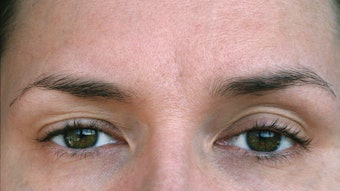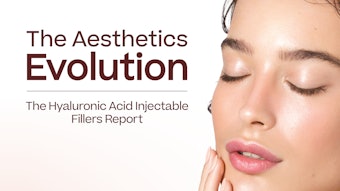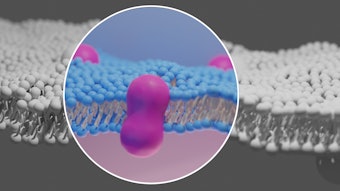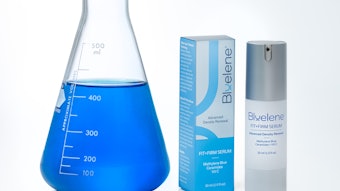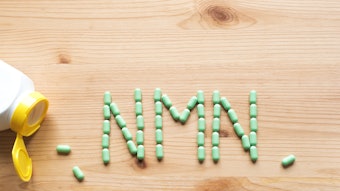
PDRN fillers, known for its collagen building benefits derived from salmon sperm, are commonly used in Korean beauty for its biocompatibility to human DNA. However, it is not yet FDA approved in the U.S. Many surgeons and medical skincare companies, however, are finding ways to innovate solutions infused with this DNA to keep up with Korean beauty trends and provide rejuvenation post-treatment.
This article is only available to registered users.
Log In to View the Full Article
PDRN fillers, known for its collagen building benefits derived from salmon sperm, are commonly used in Korean beauty for its biocompatibility to human DNA. However, it is not yet FDA approved in the U.S. Many surgeons and medical skincare companies, however, are finding ways to innovate solutions infused with this DNA to keep up with Korean beauty trends and provide rejuvenation post-treatment.
When PDRN is used in medical-grade skincare and topicals, it typically adheres to regulations including FD&C Act, the Modernization of Cosmetics Regulation Act and the Fair Packaging and Labeling Act. PDRN injections would be considered a dermal filler—a class III medical device, however, and while we wait for its approval in injectables, Giovanna McCarthy, founder of PDO Max and creator of LúmEnvy, as well as Azza Halim, MD say it's actually really great for our skin when infused through other methods.
“Though the ingredient is widely used in many Asian countries, the U.S. market often lags behind Asia in adopting skincare innovations,” says McCarthy.
A recent study [1] surveyed 235 Korean board-certified dermatologists familiar with skin boosters, and 88% replied that they practiced PN injection. The top six indications reported in the survey for PN were fine lines on the cheek followed by infraorbital fine lines, periorbital fine lines, uneven skin texture, dry skin and fine lines on the forehead.
 LúmEnvy by PDO Max.Courtesy of PDO Max
LúmEnvy by PDO Max.Courtesy of PDO Max
“Its global expansion is already here and as technology advances, PDRN will likely expand beyond the face into full-body skin health, hair restoration and even medical wound care,” Halim says.
How PDRN Compares to Other Fillers
“In a nutshell, as I tell my patients, salmon DNA is for skin rejuvenation, [and] HA fillers are for volume and contouring; Botox is for wrinkle prevention and treatment,” Halim says.
In comparison to PRP therapy, PDRN is ideal for those seeking hydration, repair and anti-aging benefits without relying on their own blood quality, Halim says. PRP, she says, is a better option for those who prefer a natural treatment using their own body’s healing factors.
PRP can be inflammatory whereas PDRN is anti-inflammatory and it works regardless of one’s health or age in comparison to PRP effects varying by blood quality, she adds. Some patients may be averse to blood draw, and, therefore, can opt for PDRN.
“Salmon DNA injectables are likely to become more prominent in aesthetic medicine due to their natural regenerative properties, safety profile and expanding applications, yet until FDA approves injecting PDRN, we must continue to use them according to the guidelines,” Halim says.
LúmEnvy: A Non-Invasive Solution for Skin Brightness and Rejuvenation with PDRN
PDO Max has recently produced LúmEnvy Clinical, a skin booster serum administered by an aesthetician or medical professional, and while it's not an injectable, LúmEnvy delivers improved skin brightness, even tone, and a "glass skin" effect with its infusion of PDRN, says McCarthy.
“Spermatozoa are one of the cleanest sources for DNA extraction, with minimal protein, peptide and contaminant levels,” she says. “PDO Max [sources] PDRN from wild Norwegian salmon, ensuring purity and effectiveness.”
PDRN in serums like LúmEnvy promote cell proliferation, tissue regeneration and inflammation reduction, she adds, inhibiting melanin production for skin brightening and repair post-treatment recovery.
Topicals, whether PDRN injectables become FDA cleared in the near future or for some time from now, their benefits are still finding a way to replenish skin, especially for those who don’t want to undergo fillers and its side effects.
PDRN is generally safe and well-tolerated, but like any injectable treatment, it has potential side effects, such as mild and temporary redness or swelling, Halim says. Bruising can occur at injection sites, especially for sensitive skin, and small bumps may form, but subsides within 24–48 hours, she adds.
Although PDRN injectables are highly biocompatible, some individuals may develop hypersensitivity, itching, hives or swelling. Halim recommends having a licensed professional do a patch test for sensitive skin and seafood allergies if an individual did undergo these fillers in the future. She says allergies to salmon DNA are rare, however.
 Salmon DNA will definitely continue to be in demand as more people seek a natural long-term anti-aging rejuvenation treatment that enhances skin function at the cellular level,Courtesy ofPremium Illustration at Adobe Stock
Salmon DNA will definitely continue to be in demand as more people seek a natural long-term anti-aging rejuvenation treatment that enhances skin function at the cellular level,Courtesy ofPremium Illustration at Adobe Stock
LúmEnvy is a new product in PDO Max's line, created specifically to target skin quality in a non-invasive way while delivering the benefits of PDRN. While the PDO threads that PDO Max produces focus on lifting and structural support, LúmEnvy is designed to enhance skin health overall, providing skin rejuvenation and radiance.
“We developed LúmEnvy after recognizing that many of our patients wanted more than just lifting—they wanted healthier, glowing skin,” McCarthy says.
The PDRN within the product are combined with ingredients such as niacinamide, hyaluronic acid, glutathione and Vitamin C to improve skin tone and texture, giving it a bright, smooth and youthful appearance, McCarthy adds. LúmEnvy was designed to enhance the benefits of PDO threads by boosting skin quality at a cellular level.
How PDRN Approval Could Benefit Your Aesthetic Goals: A Natural Anti-Aging Solution for Every Age Group
“Salmon DNA will definitely continue to be in demand as more people seek a natural long-term anti-aging rejuvenation treatment that enhances skin function at the cellular level,” Halim says.
Salmon DNA seems to have benefits for all age groups.
For individuals in their 20s or 30s investing in preventative treatments rather than waiting for visible aging signs, salmon DNA helps maintain hydration, collagen levels and skin resilience for early intervention, Halim says.
PDRN can reduce fine lines and early wrinkles, particularly around the eyes and mouth, improving skin texture and slowing down collagen loss–a goal of patients in their 30s and 40s who wish to delay visible signs of aging, she adds.
Ages 40 and up, however, want to address repair, rejuvenation and restoration by simulating skin regeneration in areas of volume loss, increase skin density and firmness, and PDRN helps rejuvenate the skin post-laser or microneedling recovery.
“The future of aesthetics is leaning toward natural-looking results, with a greater focus on skin quality as the true indicator of youth,” McCarthy says. “Biostimulators are shaping this future, offering a maintenance approach rather than quick fixes.”
References:
1-https://onlinelibrary.wiley.com/doi/10.1111/jocd.16125

